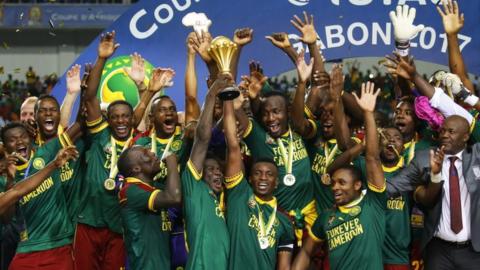- Eden Hazard has been criticised for swapping shirts with Angel di Maria at half-time of Chelsea's 2-1 loss to PSG
- Mario Balotelli and Andre Santos have done the same in recent years
- The tradition originated in 1931 AFTER France's win over England
Eden Hazard has been pilloried for
swapping shirts
with Angel di Maria at half-time of Chelsea's Champions League game against
Paris Saint-Germain on Wednesday evening.The Belgian, whose form has slumped
for Chelsea this season, is not the first Premier League player to anger his
fans with an ill-judged and badly-timed shirt swap.
Mario Balotelli was fined by
Liverpool after seeking the shirt
of Real Madrid defender Pepe at half-time of their Champions League clash in
2014, with his manager Brendan Rodgers saying after the game: 'It is not
something I stand for – if you want to do that, you do it at the end of the
game.'
| Chelsea's Eden Hazard has been criticised
for swapping shirts with Angel di Maria at half-time against PSG |
Arsenal's Andre Santos, left, and
Liverpool's Mamadou Sakho, far right, angered fans with half-time swaps
The Italian was promptly hauled off
during the interval by Rodgers. Balotelli's team-mate Mamadou Sakho
had done the same a year previously with Samuel Eto'o when Liverpool played
Chelsea, and in 2012 Andre
Santos infuriated Arsenal fans when he took the shirt of Robin
van Persie – who had left the Gunners for Manchester United – as they walked
off at half-time at Old Trafford. Arsenal's Theo Walcott was more
savvy when he sought Van Persie's shirt in 2013 - he waited
until after the game and did it in the tunnel to avoid the ire of his
fans.
Many fans think players swapping
shirts mid-game illustrates a lack of focus and commitment, but why is the
exchange part of football's etiquette in the first place?
Shirt-swapping is not a modern
phenomenon – it is thought that its first instance occurred after France's 5-2
win over England in Paris in 1931.It was France's first ever victory
over England - the nation who had invented and codified the game – and they
requested their opponents' shirts to commemorate the triumph.
It didn't become an established
tradition for a couple of decades, however, with FIFA citing the 1954 World Cup
in Switzerland as the turning point.
In 1962 a 20 year-old Eusebio
inspired Benfica to their second European Cup triumph in a row, and at the end
of the match he was he was hoisted aloft by the celebrating fans.
'I had (Alfredo) Di Stefano's jersey
in my shorts and I was afraid that someone would take it off me!' he recalled.
By the 1966 World Cup shirt-swapping
was becoming an established post-match practice in important games, but it
became the focal point of an incendiary quarter-final between England and
Argentina.
A late Geoff Hurst goal gave England
the win but the game is remembered for manager Alf Ramsey describing the
Argentines as 'animals' and stopping George Cohen from exchanging shirts with
Alberto Gonzalez.
Four years later Bobby Moore,
England's victorious captain in 1966, was imperious in England's 1-0 loss to
Brazil and was embraced by Pele in the centre circle after the game as they
traded shirts.
| Alf Ramsey stops George Cohen swapping his shirt after England's 1966 World Cup win against Argentina |
| Cheslea's John Terry, left, and Barcelona's Lionel Messi after the Champions League semi-final in 2012 |
It is one of football's most iconic
images, centred on the mutual respect of two of the finest players in history.
Jeff Agoos, a retired defender who
earned over 100 caps for the USA, has collected over 400 shirts from his
playing career, and said: 'I suppose it is strange to keep these souvenirs, but
it commemorates a very special moment, particularly when you are playing
against another country or a big club.'
In 2004 non-league Scarborough
hosted Premier League side Chelsea in the FA Cup, and 22 year-old goalkeeper
Leigh Walker sought out his opposite number Carlo Cudicini after the game for
his shirt – the Italian even signed it with the message: 'To Leigh, best luck
for the rest of the season'.
Walker, who had helped keep the
scoreline to 1-0, was delighted - but disaster soon struck.
'My mum threw the shirt in the
washing machine when I got home on Saturday night because it was caked in mud,'
Walker said. 'So Carlo's autograph has been
washed out of his jersey - which is a real sickener.'
Roy Keane was scathing in his
assessment of Hazard's half-time shirt swap with Di Maria on Wednesday,
describing it as 'shocking'.
Roy Keane, left, occasionally
swapped shirts after games but criticised Eden Hazard for doing it at half-time
|
The former Manchester United captain
said: 'What has to be going through a player’s mindset in such a big game?
You’re thinking about swapping jerseys at half-time? I wouldn’t even bother
swapping shirts at the end of the game? At half-time? Shocking.'
Keane did occasionally swap shirts
with opponents after the game, but his incredulity at Hazard's decision is
matched by many Chelsea fans.





0 comments:
Post a Comment
PLEASE BE POLITE